Abstract
BACKGROUND--Exposure to radiation is a hazard of invasive cardiology. To minimise the risk it is essential to keep the doses received as low as possible. AIM--To assess the effect on cardiologist radiation exposure and the quality of coronary artery opacification of the use of a remotely controlled mechanical pump for coronary arteriography. A secondary aim was to assess any disadvantages and safety. METHODS--319 patients were randomised to have coronary arteriography carried out with contrast injected either by hand or by a remotely controlled mechanical pump. Six cardiologists participated: two catheter laboratories were used and both brachial and femoral approaches were included. The exposure of the cardiologists to radiation was assessed by film badge dosimetry. The badges were worn on the hat. The total time for the procedure, screening time, the dose-area product meter reading, and any complications were recorded for each examination. The quality of arterial opacification was reported on a scale of 0-5. RESULTS--The mean radiation dose per procedure was 0.011 mSv for hand injection of contrast and 0.005 mSv for mechanical injection (p < 0.01). There were no differences in procedure times or screening times. There were no complications attributable to mechanical injection. Arterial opacification was not significantly different in the two groups (4.01 v 4.03 for the left coronary artery, 4.68 v 4.78 for the right coronary artery). The right coronary artery was consistently better opacified than the left by both techniques (4.59 v 3.89, p < 0.001). CONCLUSIONS--Use of a remotely controlled mechanical pump for coronary arteriography reduced cardiologist radiation exposure by half. It was not associated with any inconvenience, expense, or complications and produced arterial opacification at least as good as injection by hand.
Full text
PDF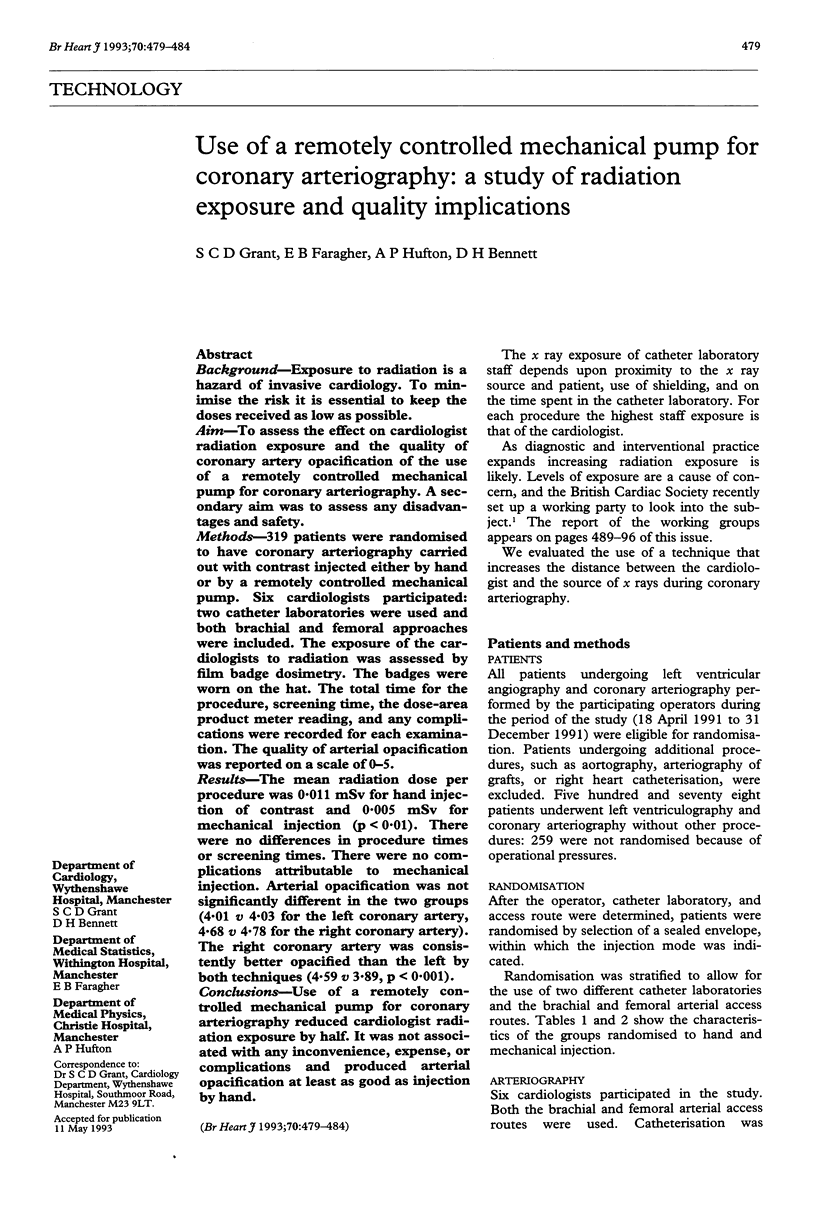
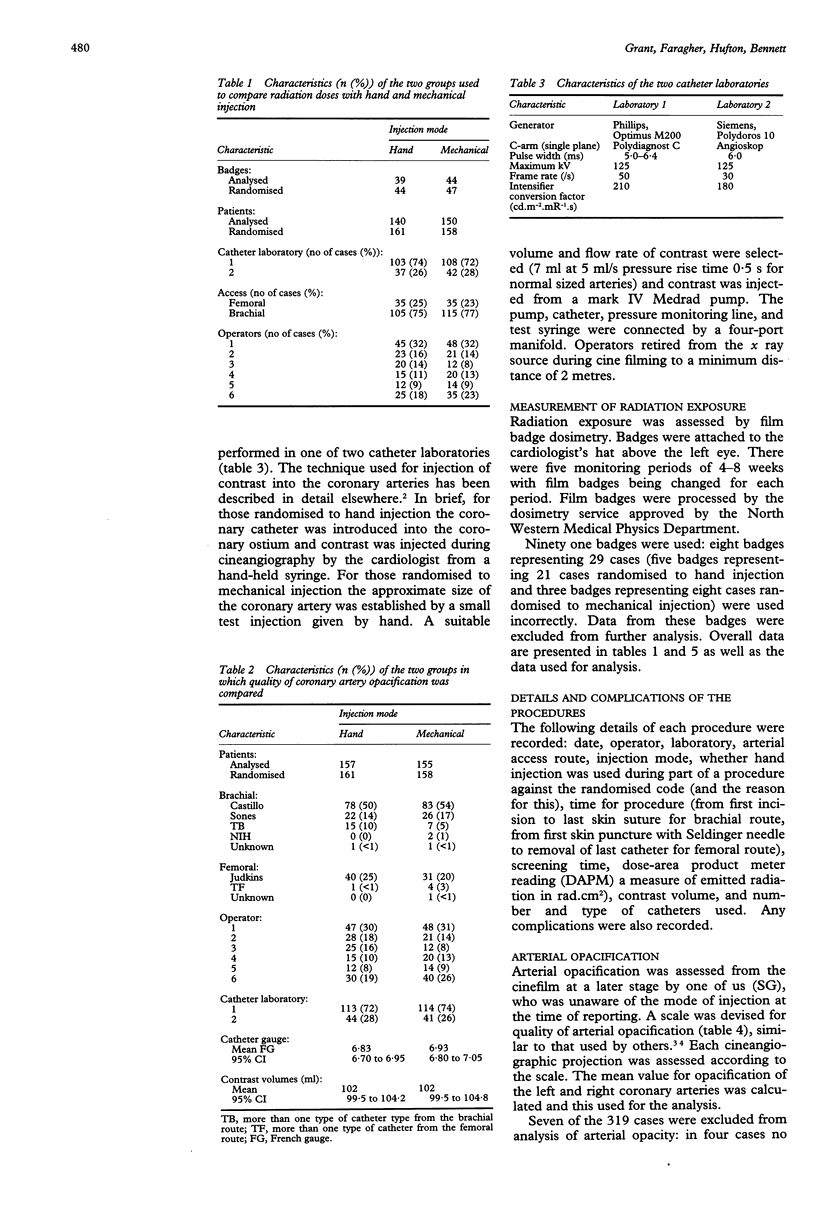
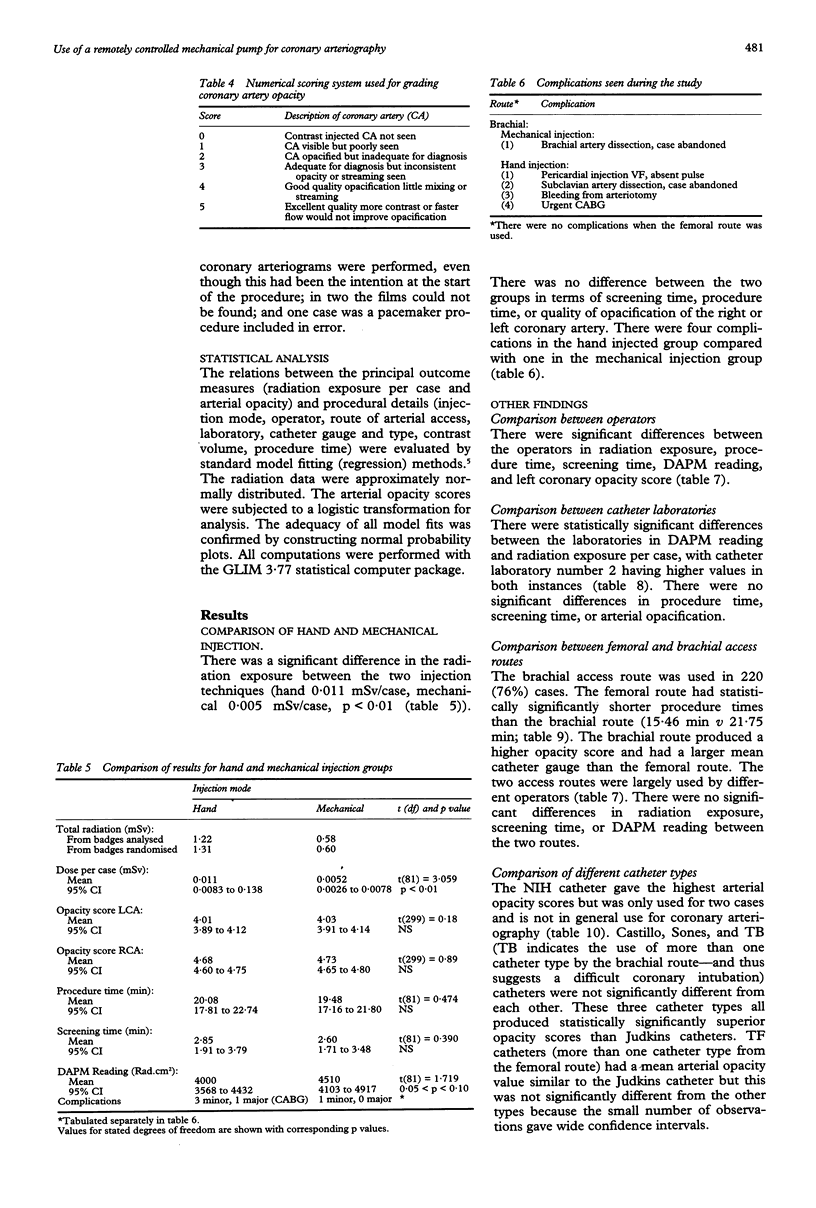
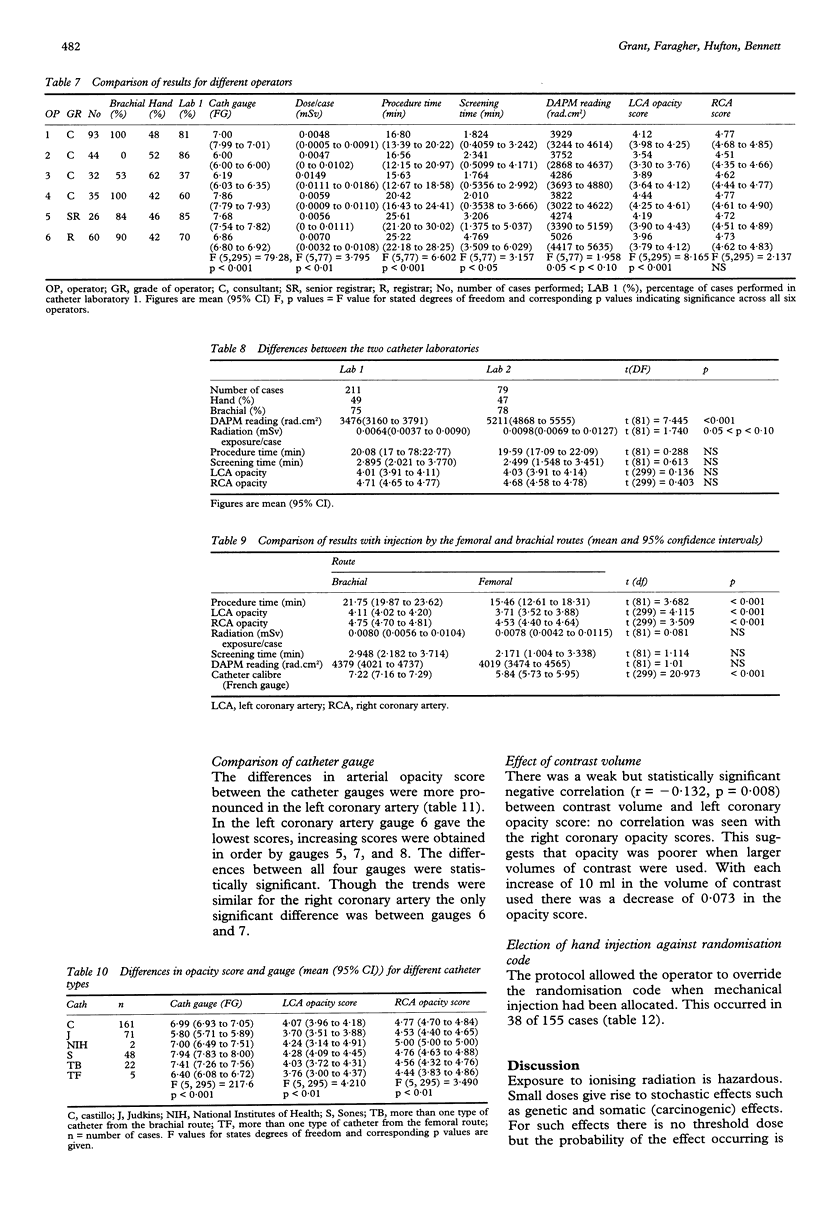

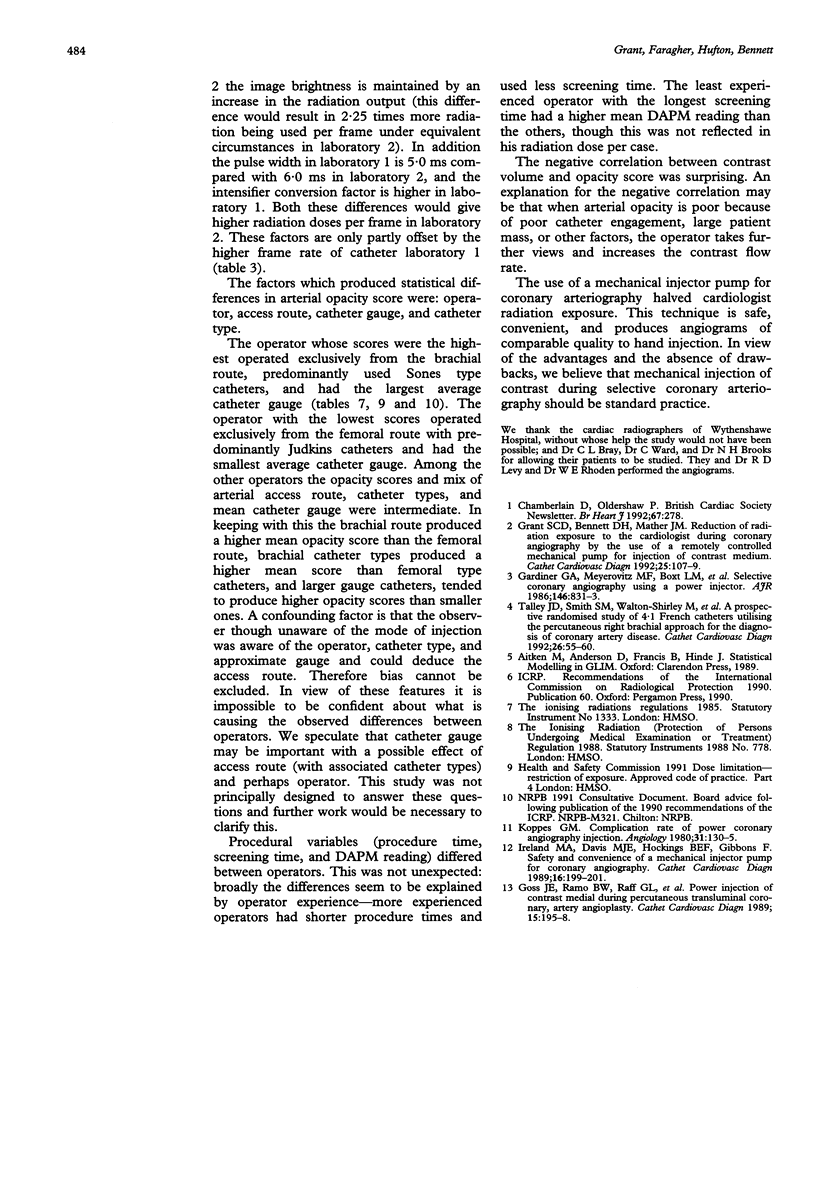
Selected References
These references are in PubMed. This may not be the complete list of references from this article.
- Gardiner G. A., Jr, Meyerovitz M. F., Boxt L. M., Harrington D. P., Taus R. H., Kandarpa K., Ganz P., Selwyn A. P. Selective coronary angiography using a power injector. AJR Am J Roentgenol. 1986 Apr;146(4):831–833. doi: 10.2214/ajr.146.4.831. [DOI] [PubMed] [Google Scholar]
- Goss J. E., Ramo B. W., Raff G. L., Maddoux G. L., Heuser R. R., Shadoff N., Leatherman G. F. Power injection of contrast media during percutaneous transluminal coronary artery angioplasty. Cathet Cardiovasc Diagn. 1989 Mar;16(3):195–198. doi: 10.1002/ccd.1810160314. [DOI] [PubMed] [Google Scholar]
- Grant S. C., Bennett D. H., Mather J. M. Reduction of radiation exposure to the cardiologist during coronary angiography by the use of a remotely controlled mechanical pump for injection of contrast medium. Cathet Cardiovasc Diagn. 1992 Feb;25(2):107–109. doi: 10.1002/ccd.1810250206. [DOI] [PubMed] [Google Scholar]
- Ireland M. A., Davis M. J., Hockings B. E., Gibbons F. Safety and convenience of a mechanical injector pump for coronary angiography. Cathet Cardiovasc Diagn. 1989 Mar;16(3):199–201. doi: 10.1002/ccd.1810160315. [DOI] [PubMed] [Google Scholar]
- Koppes G. M. Complication rate of power coronary angiography injection. Angiology. 1980 Feb;31(2):130–135. doi: 10.1177/000331978003100208. [DOI] [PubMed] [Google Scholar]
- Talley J. D., Smith S. M., Walton-Shirley M., Hattel L., Szabo T., Godlewski K., Stahr L., Yussman Z., Palmer S., Vogel R. A prospective randomized study of 4.1 French catheters utilizing the percutaneous right brachial approach for the diagnosis of coronary artery disease. Cathet Cardiovasc Diagn. 1992 May;26(1):55–60. doi: 10.1002/ccd.1810260113. [DOI] [PubMed] [Google Scholar]


